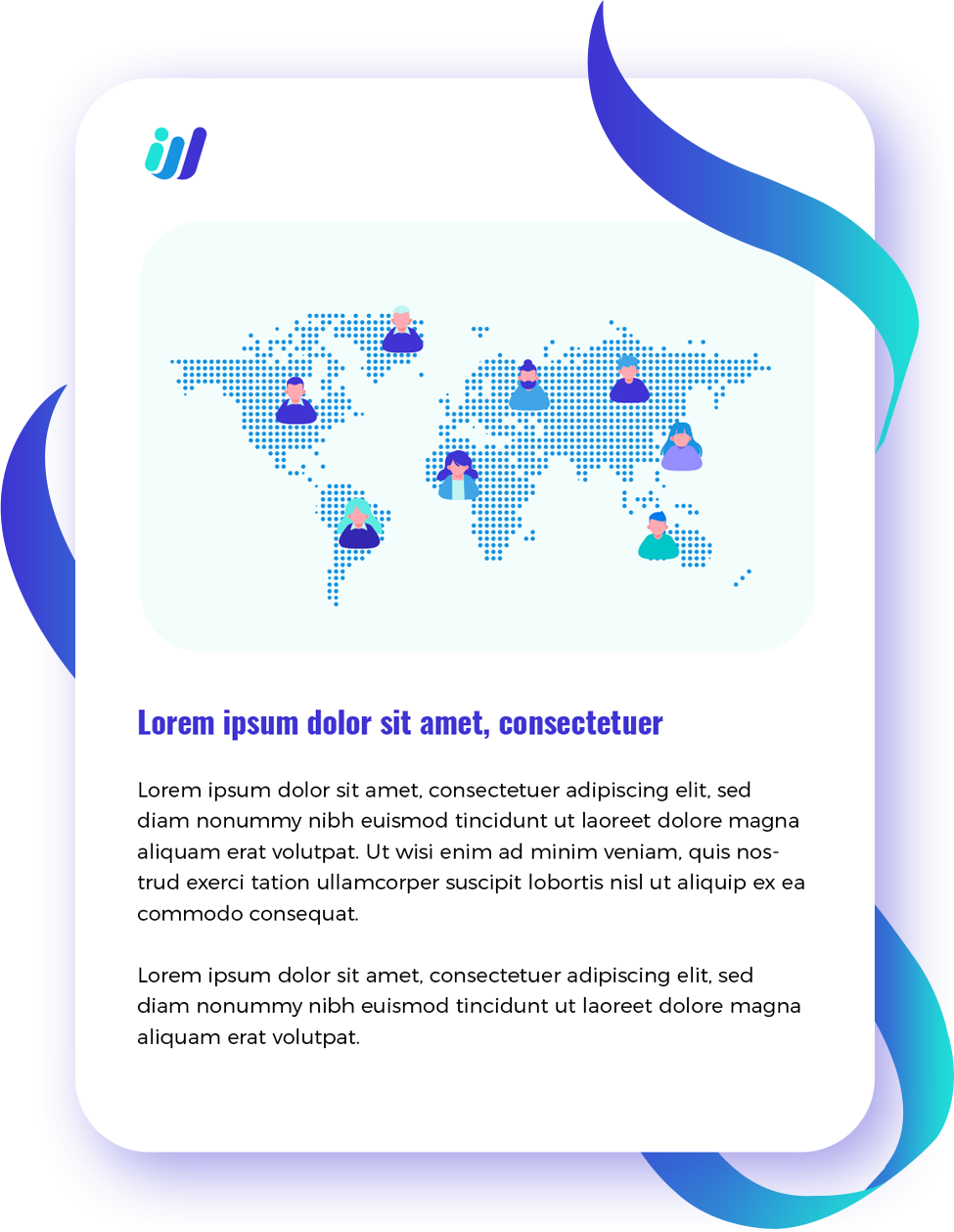The outsourcing industry has undergone a significant transformation in recent years, especially during the COVID-19 pandemic. With the need to maintain social distancing and ensure employee safety, many outsourcing and offshoring firms switched to remote work to continue their operations seamlessly. This shift not only helped minimize health risks but also brought several benefits for both employees and employers.
One of the key advantages of remote work is a better work-life balance. By eliminating the need for a daily commute and providing flexibility in work hours, remote work allows employees to spend more time with their families and pursue personal interests. This, in turn, leads to increased job satisfaction and overall well-being.
On the other hand, employers benefit from reduced operational costs associated with maintaining physical office spaces. By embracing remote work, outsourcing companies can reduce office rent, utilities, and other overheads. Additionally, remote work opens up access to a global talent pool, allowing companies to hire the most qualified candidates regardless of their geographical location.
The success of remote work during the pandemic has prompted many outsourcing industry firms to continue with this work model even after restrictions ease. Moreover, more companies are looking at remote work as a long-term strategy. However, for a successful transition, the outsourcing industry needs to consider several factors and address potential challenges.
Here are six effective ways for outsourcing companies to successfully transition to remote work:
- Preparing a remote work policy
A comprehensive remote work policy is crucial to communicate organizational changes, employee working hours, communication tools, and productivity metrics. It helps set clear guidelines for a hybrid work team, assess required resources for remote work, and streamline internal workflows.
- Managing employee expectations
Clear communication and management of employee expectations are vital to ensuring a harmonious remote work environment. Addressing changes in benefits, travel allowances, and providing the necessary tools and resources for effective remote work helps maintain employee satisfaction and motivation.
- Incorporating remote collaboration tools
Collaboration and communication tools play a pivotal role in remote work success. Tools like Slack, Zoom, and Microsoft Teams enable efficient task discussions, direct reporting, and virtual team gatherings. Investing in user-friendly and secure collaboration tools is crucial for effective remote collaboration.
- Conducting frequent virtual activities
Organizing virtual team meetings, team-building activities, and webinars helps maintain employee well-being, reduce burnout, and foster a positive company culture. These activities contribute to better team bonding and encourage teamwork.
- Addressing employee concerns proactively
Supporting employees through the remote work transition by providing information, training modules, and work-from-home best practices fosters a smoother work experience. Regular check-ins, identifying workflow issues, and offering the necessary tools and resources help prevent work disruptions and enhance efficiency.
- Establishing a standard work schedule
Defining work schedules and availability hours is essential for maintaining client support and ensuring a connected and productive remote team. Aligning work schedules with clients’ time zones and setting daily routines help remote workers achieve their targets and maintain consistent business performance.
While remote work offers numerous benefits, outsourcing companies may also face challenges. Here are three common challenges and how to address them:
- Cybersecurity risks
Remote work environments pose cybersecurity risks, as employees rely on personal devices and home networks. Investing in virtual private network (VPN) services can provide secure and encrypted connections, protecting sensitive data and ensuring client trust.
- Lack of quality assurance
Monitoring the performance of a distributed team can be challenging. Utilizing monitoring software and call center quality assurance tools enables supervisors to track and assess employee performance, ensuring customer service standards are met.
- High attrition rate
Maintaining employee engagement and connection in a remote work setup is crucial for reducing attrition. Encouraging open communication, organizing virtual meetings, and building a strong company culture can improve retention rates and provide growth opportunities for remote workers.
Leading outsourcing industries, such as IT outsourcing and business process outsourcing (BPO), have already adoptedremote work. Companies like Collabera in IT outsourcing and TTEC and Sutherland in BPO are transitioning to remote work and reaping the benefits of flexibility and cost savings.
Conclusion
Third wave outsourcing, which emphasizes remote work and collaboration, is becoming increasingly significant in the outsourcing industry. By implementing effective strategies, addressing challenges, and leveraging the right tools and technology, outsourcing companies can successfully transition to remote work. This not only improves employee well-being and work-life balance but also enhances productivity, reduces costs, and provides access to a global talent pool, ultimately leading to sustainable business growth.
The Importance of Third Wave Outsourcing for Remote Work and Collaboration
The outsourcing industry has undergone a significant transformation in recent years, especially during the COVID-19 pandemic. With the need to maintain social distancing and ensure employee safety, many outsourcing and offshoring firms switched to remote work to continue their operations seamlessly. This shift not only helped minimize health risks but also brought several benefits for both employees and employers.
One of the key advantages of remote work is a better work-life balance. By eliminating the need for a daily commute and providing flexibility in work hours, remote work allows employees to spend more time with their families and pursue personal interests. This, in turn, leads to increased job satisfaction and overall well-being.
On the other hand, employers benefit from reduced operational costs associated with maintaining physical office spaces. By embracing remote work, outsourcing companies can reduce office rent, utilities, and other overheads. Additionally, remote work opens up access to a global talent pool, allowing companies to hire the most qualified candidates regardless of their geographical location.
The success of remote work during the pandemic has prompted many outsourcing industry firms to continue with this work model even after restrictions ease. Moreover, more companies are looking at remote work as a long-term strategy. However, for a successful transition, the outsourcing industry needs to consider several factors and address potential challenges.
Here are six effective ways for outsourcing companies to successfully transition to remote work:
- Preparing a remote work policy
A comprehensive remote work policy is crucial to communicate organizational changes, employee working hours, communication tools, and productivity metrics. It helps set clear guidelines for a hybrid work team, assess required resources for remote work, and streamline internal workflows.
- Managing employee expectations
Clear communication and management of employee expectations are vital to ensuring a harmonious remote work environment. Addressing changes in benefits, travel allowances, and providing the necessary tools and resources for effective remote work helps maintain employee satisfaction and motivation.
- Incorporating remote collaboration tools
Collaboration and communication tools play a pivotal role in remote work success. Tools like Slack, Zoom, and Microsoft Teams enable efficient task discussions, direct reporting, and virtual team gatherings. Investing in user-friendly and secure collaboration tools is crucial for effective remote collaboration.
- Conducting frequent virtual activities
Organizing virtual team meetings, team-building activities, and webinars helps maintain employee well-being, reduce burnout, and foster a positive company culture. These activities contribute to better team bonding and encourage teamwork.
- Addressing employee concerns proactively
Supporting employees through the remote work transition by providing information, training modules, and work-from-home best practices fosters a smoother work experience. Regular check-ins, identifying workflow issues, and offering the necessary tools and resources help prevent work disruptions and enhance efficiency.
- Establishing a standard work schedule
Defining work schedules and availability hours is essential for maintaining client support and ensuring a connected and productive remote team. Aligning work schedules with clients’ time zones and setting daily routines help remote workers achieve their targets and maintain consistent business performance.
While remote work offers numerous benefits, outsourcing companies may also face challenges. Here are three common challenges and how to address them:
- Cybersecurity risks
Remote work environments pose cybersecurity risks, as employees rely on personal devices and home networks. Investing in virtual private network (VPN) services can provide secure and encrypted connections, protecting sensitive data and ensuring client trust.
- Lack of quality assurance
Monitoring the performance of a distributed team can be challenging. Utilizing monitoring software and call center quality assurance tools enables supervisors to track and assess employee performance, ensuring customer service standards are met.
- High attrition rate
Maintaining employee engagement and connection in a remote work setup is crucial for reducing attrition. Encouraging open communication, organizing virtual meetings, and building a strong company culture can improve retention rates and provide growth opportunities for remote workers.
Leading outsourcing industries, such as IT outsourcing and business process outsourcing (BPO), have already adoptedremote work. Companies like Collabera in IT outsourcing and TTEC and Sutherland in BPO are transitioning to remote work and reaping the benefits of flexibility and cost savings.
Conclusion
Third wave outsourcing, which emphasizes remote work and collaboration, is becoming increasingly significant in the outsourcing industry. By implementing effective strategies, addressing challenges, and leveraging the right tools and technology, outsourcing companies can successfully transition to remote work. This not only improves employee well-being and work-life balance but also enhances productivity, reduces costs, and provides access to a global talent pool, ultimately leading to sustainable business growth.
Let us help you find top talents in IT, technical support, digital marketing, and cloud services so you can leverage all the benefits of outsourcing in the new normal. Request a FREE copy of the e-book on Third Wave Outsourcing .



